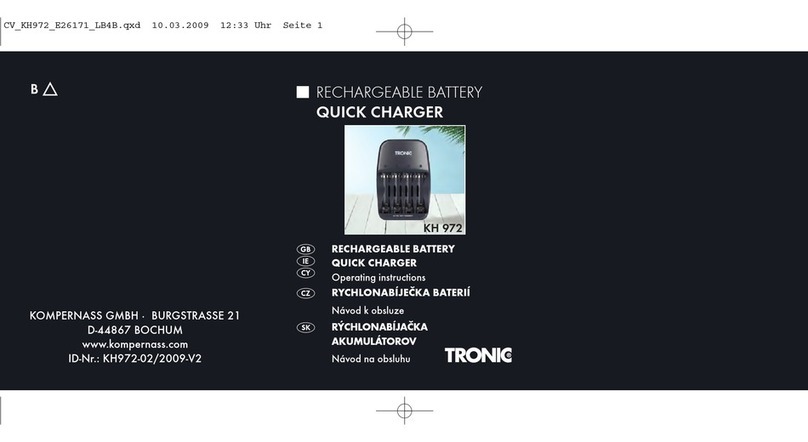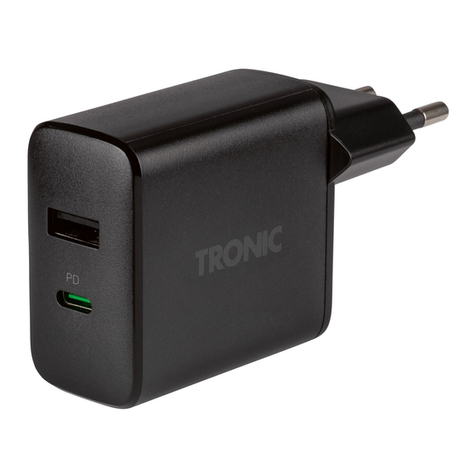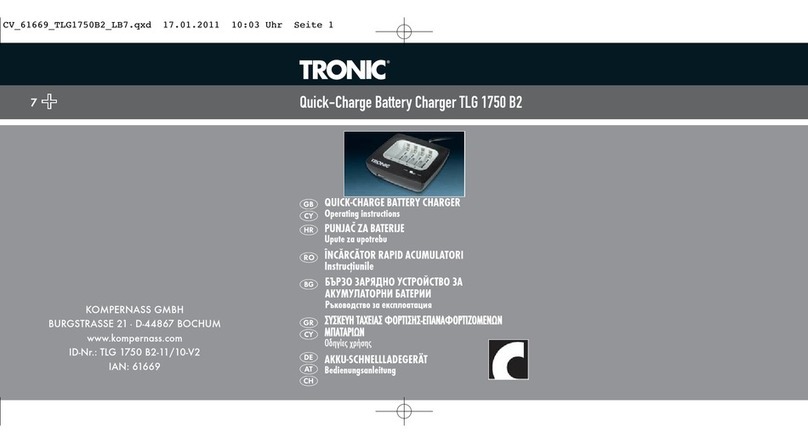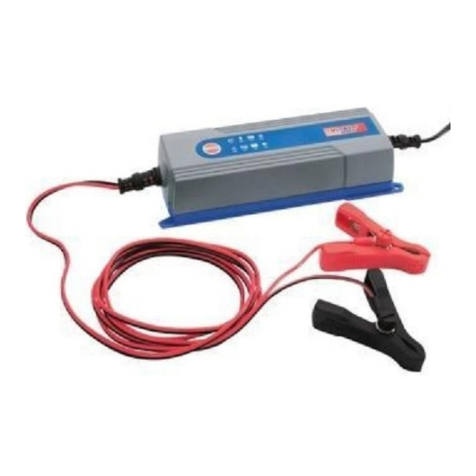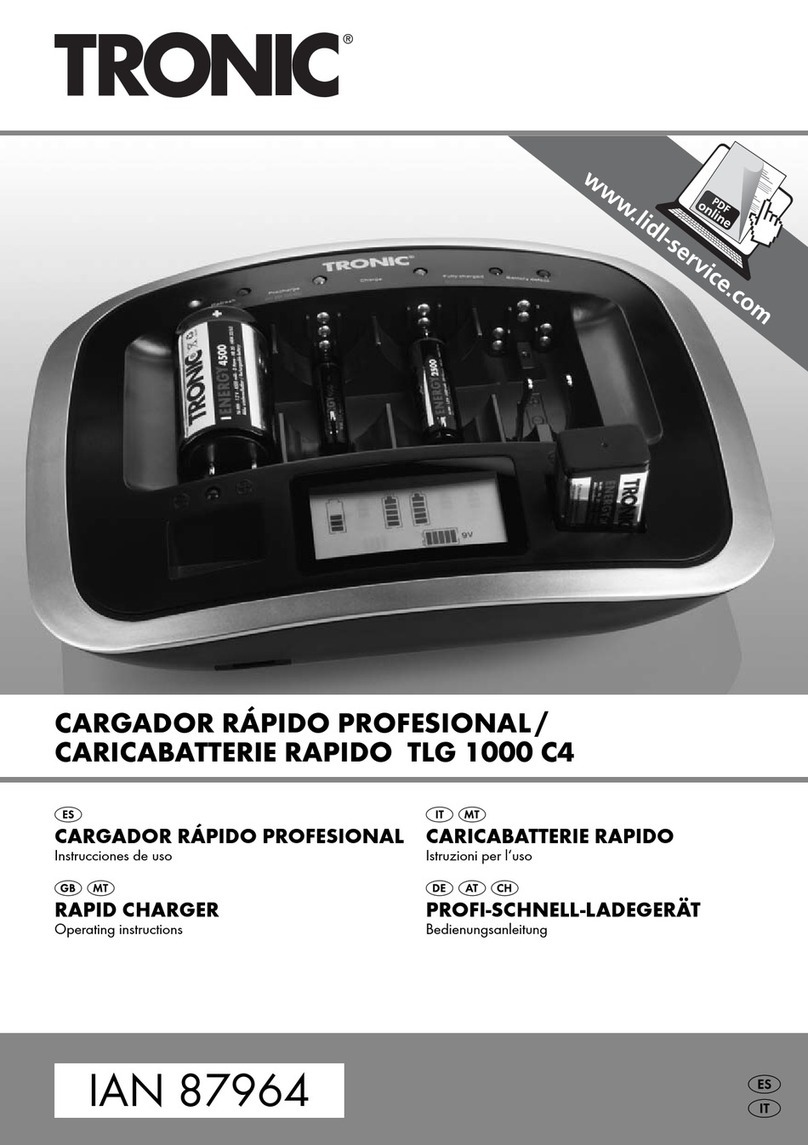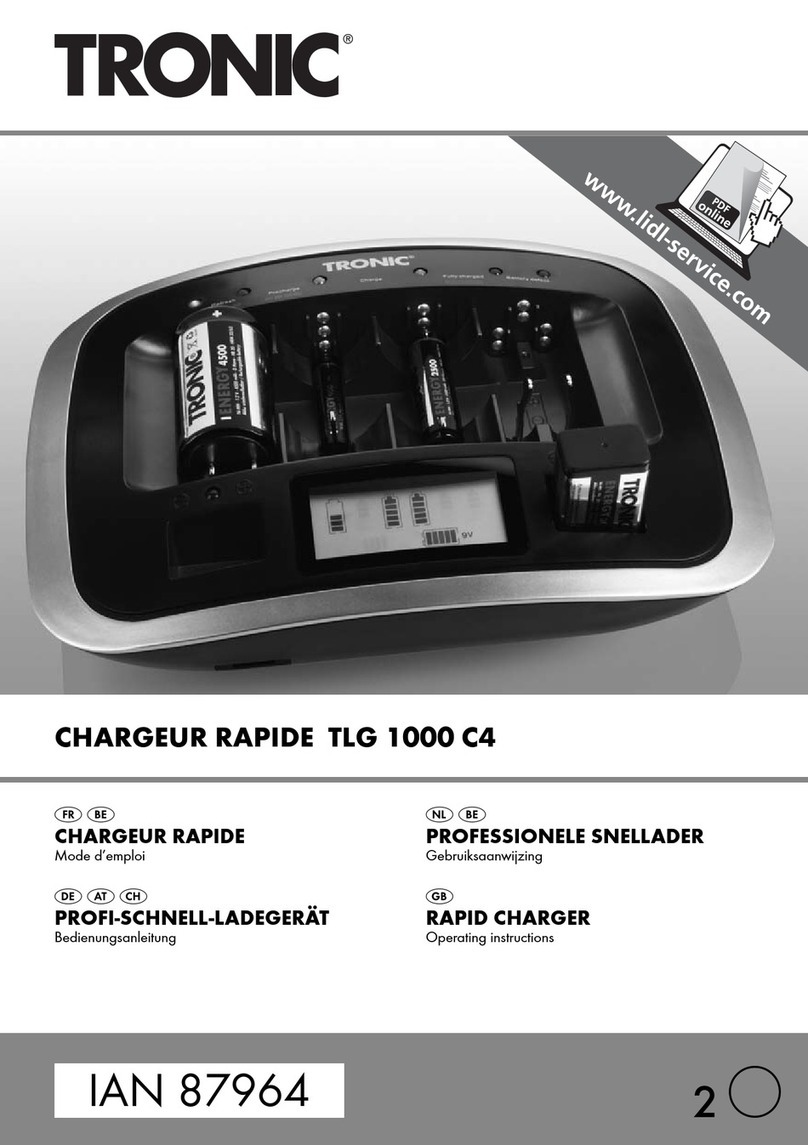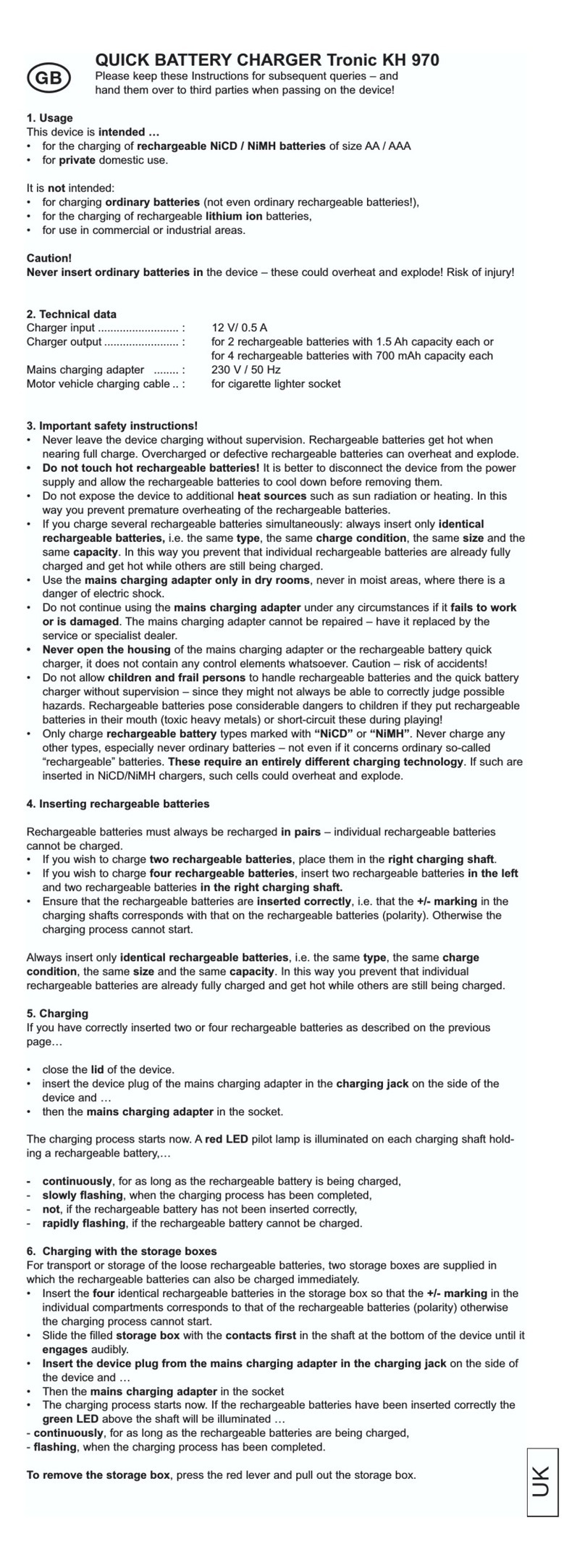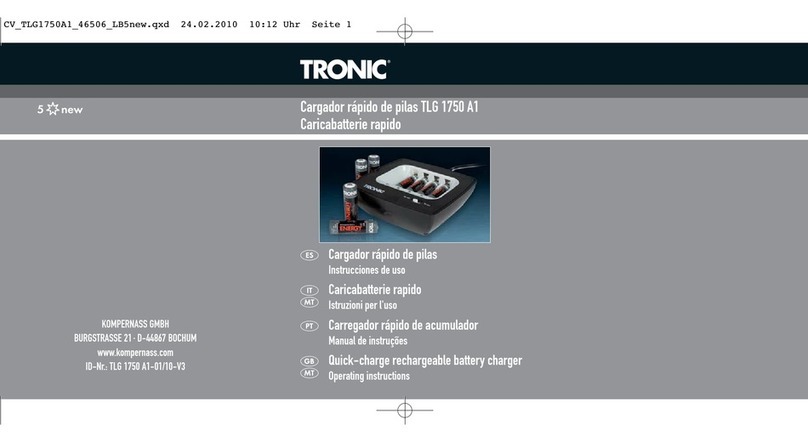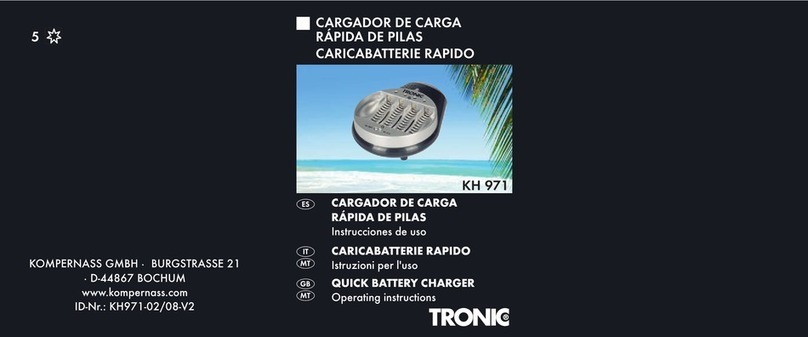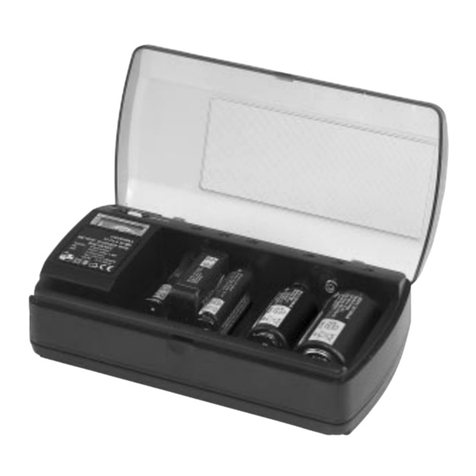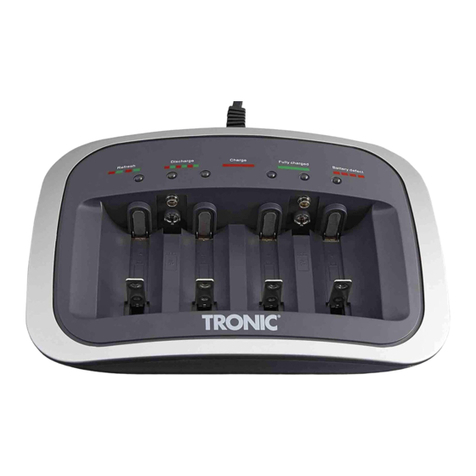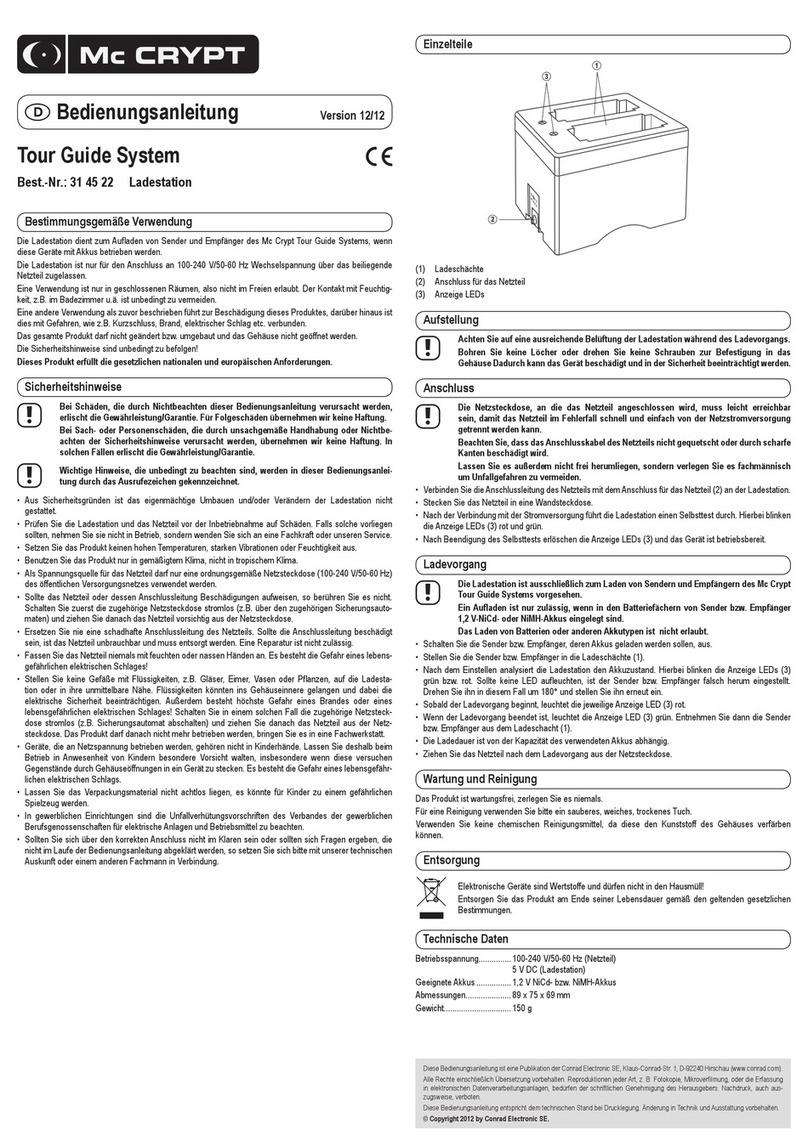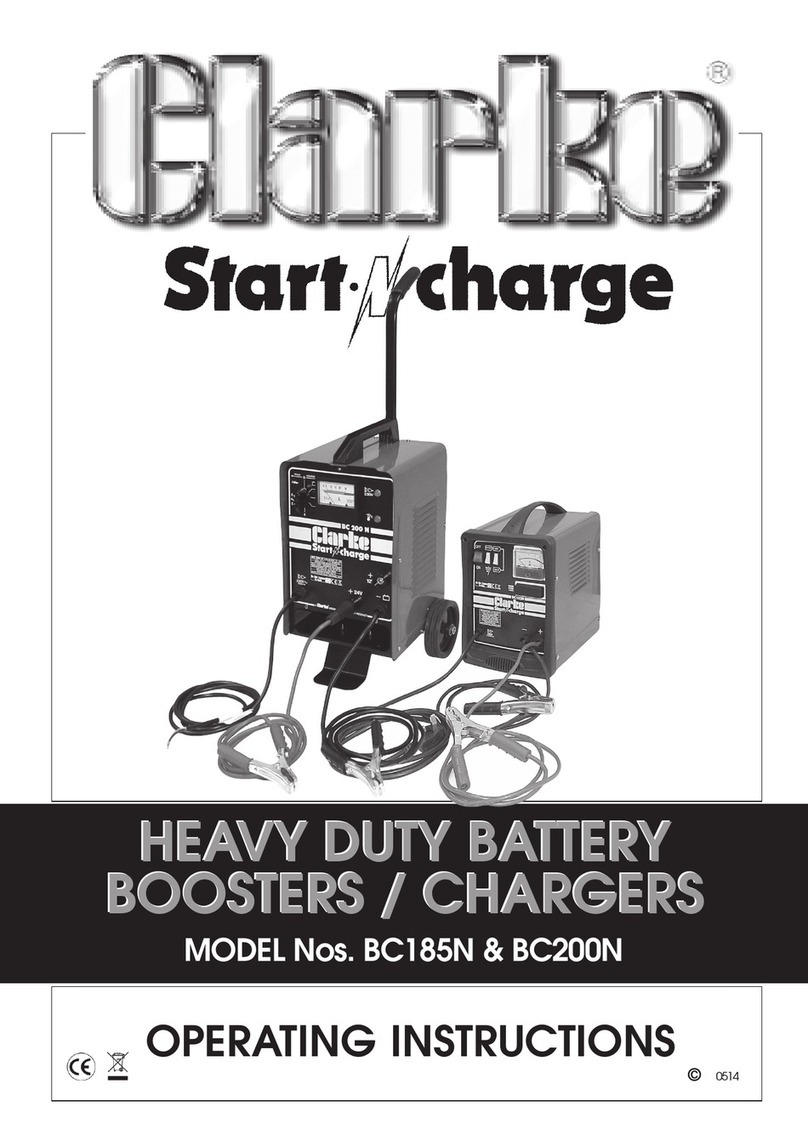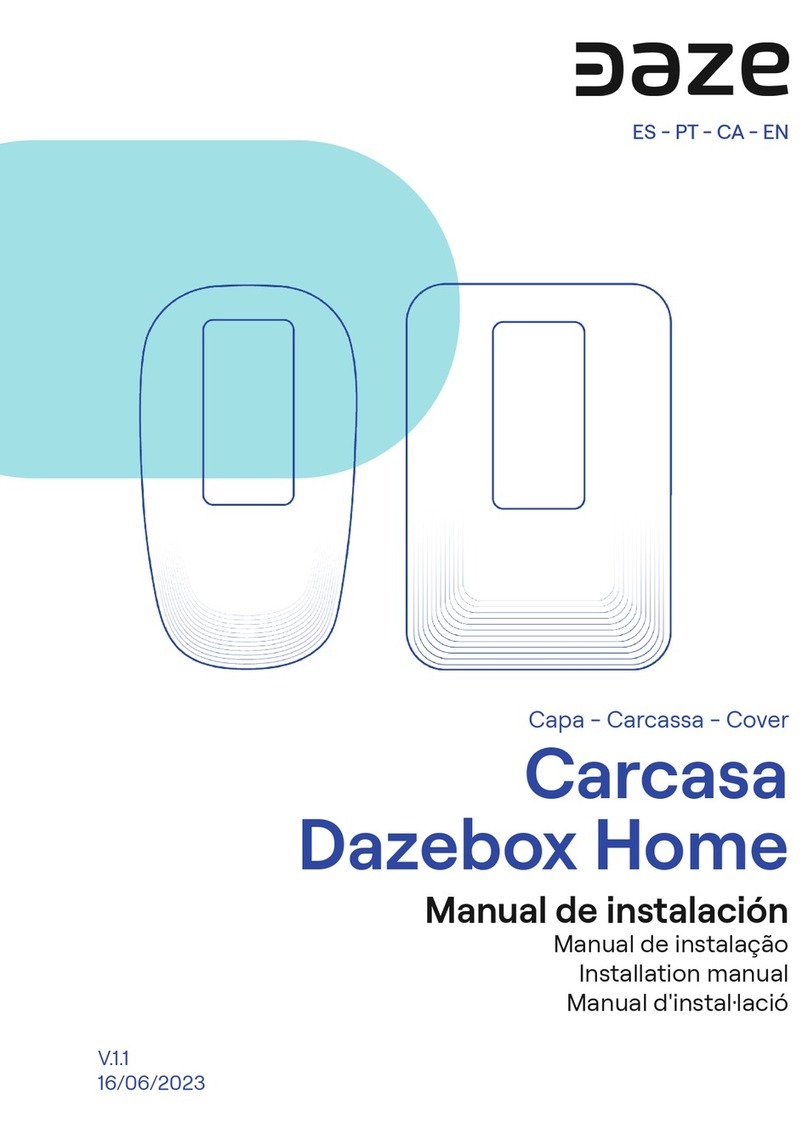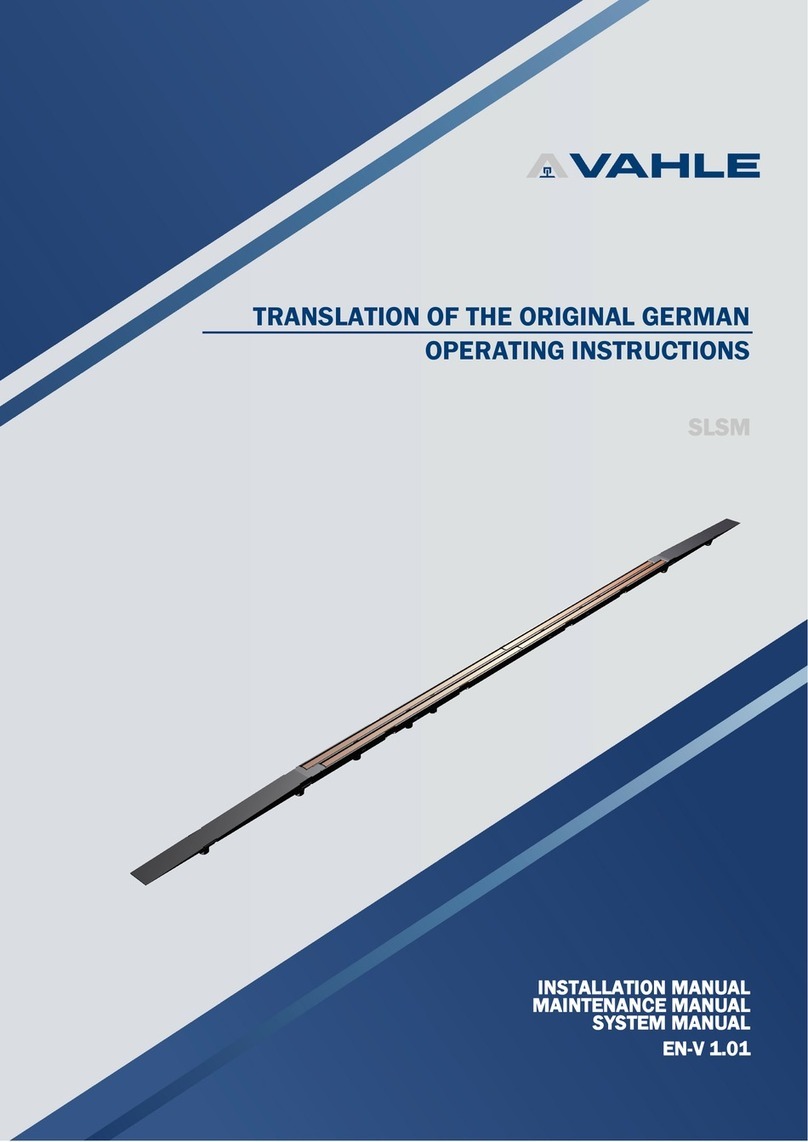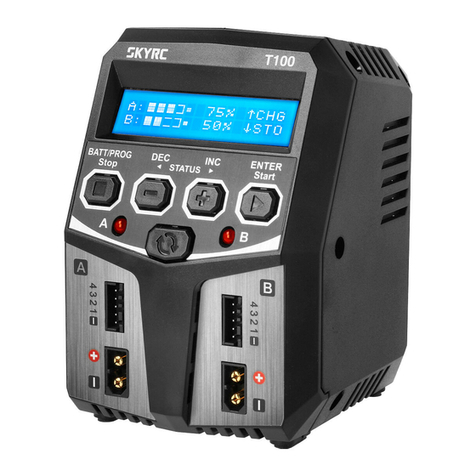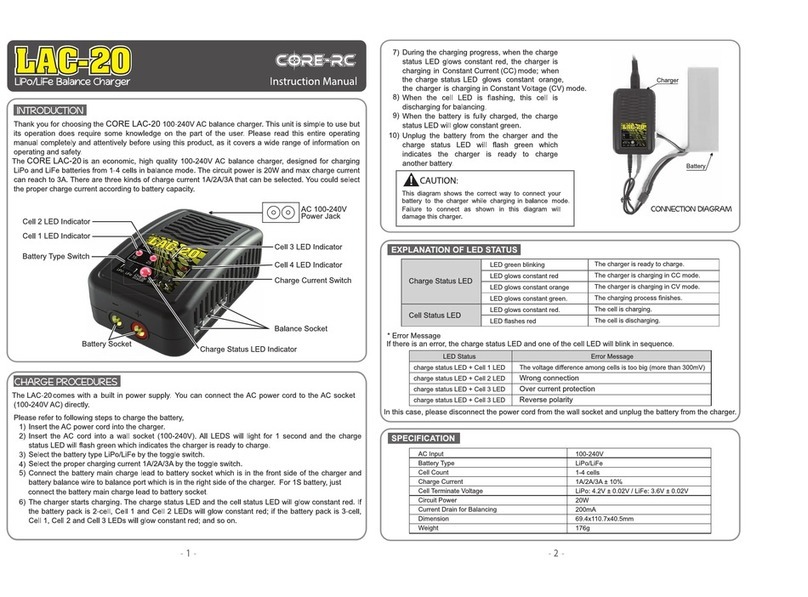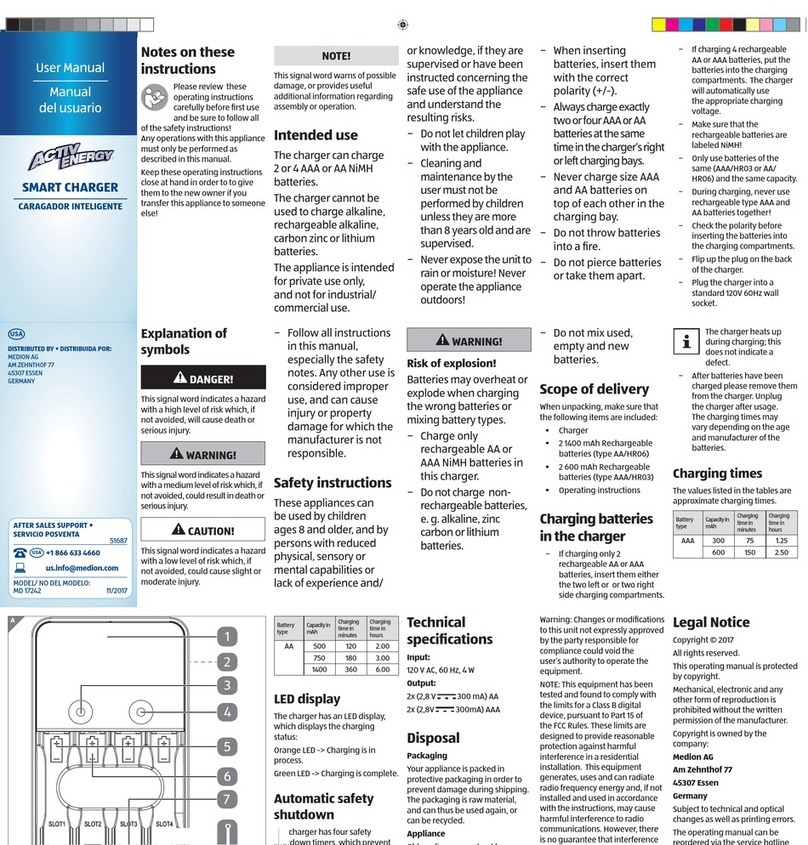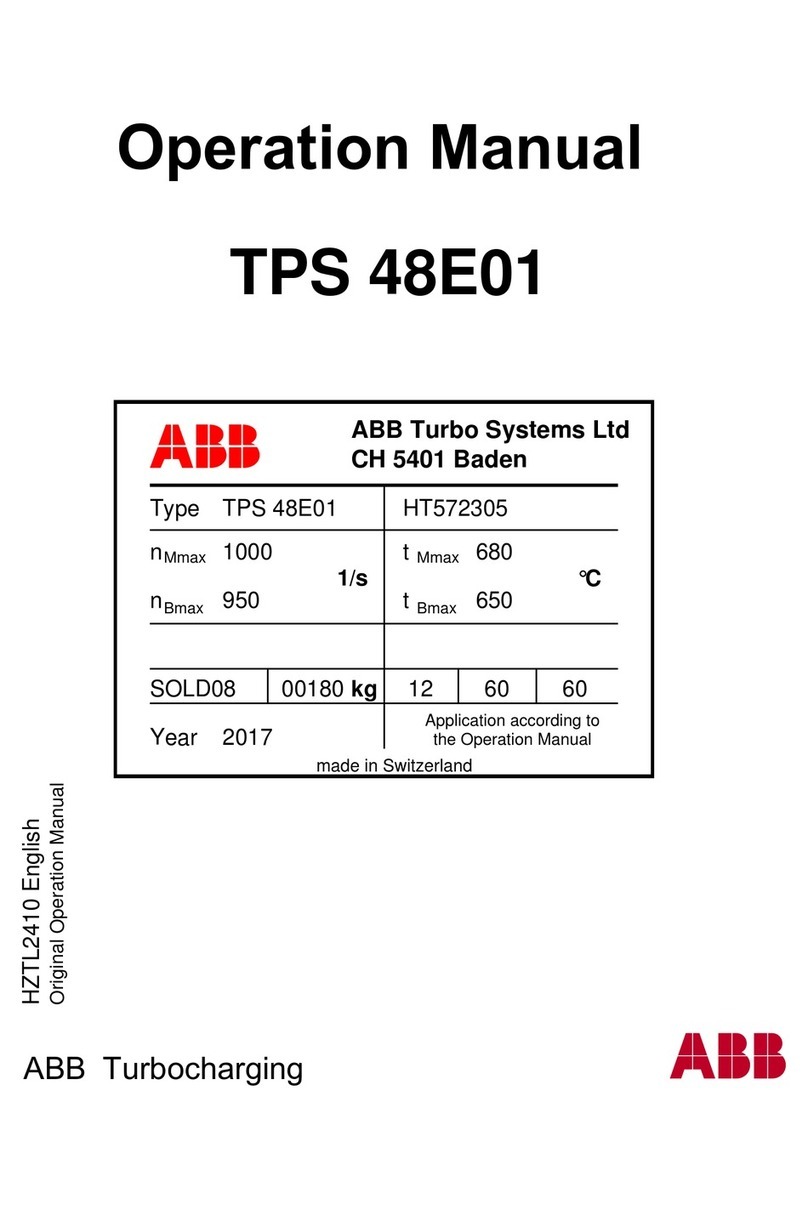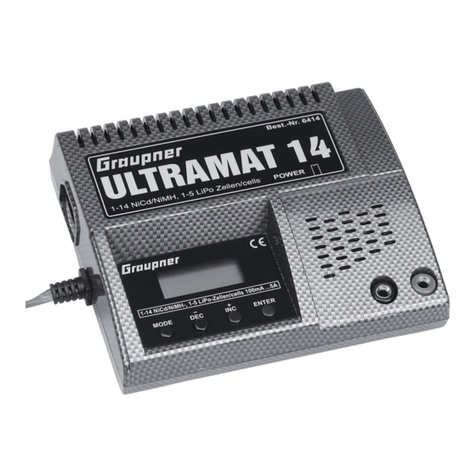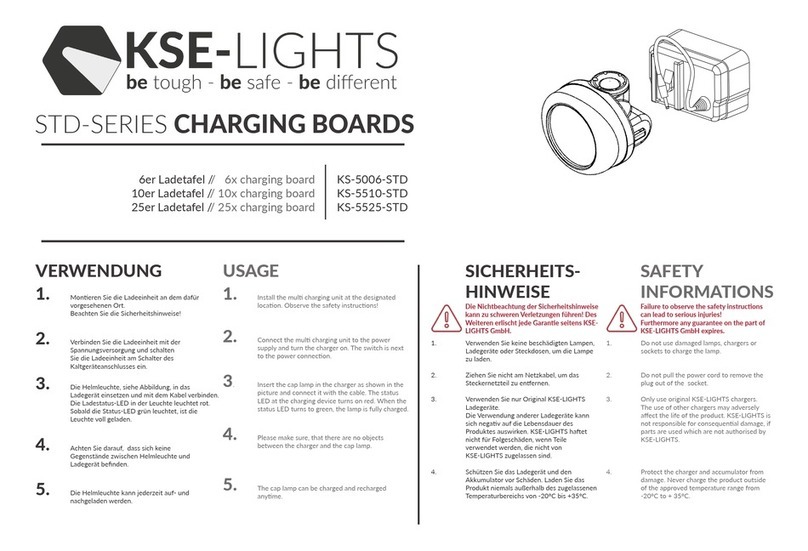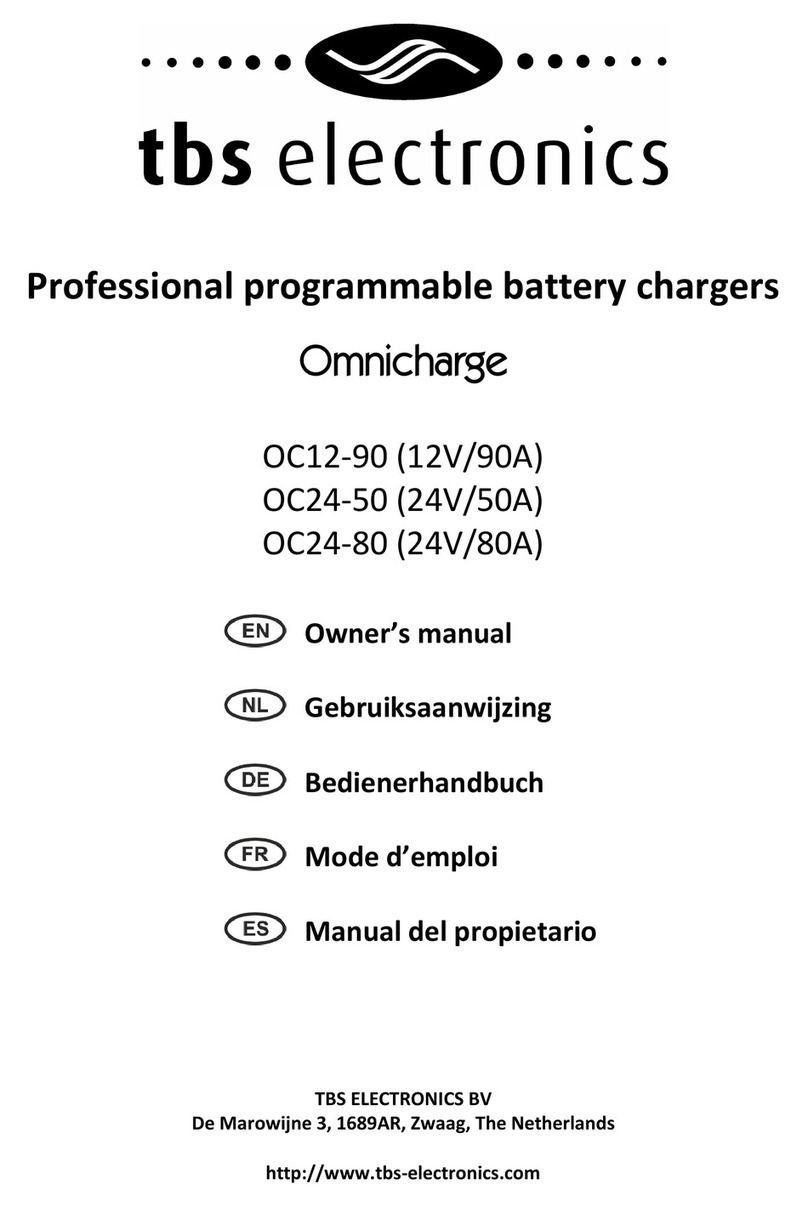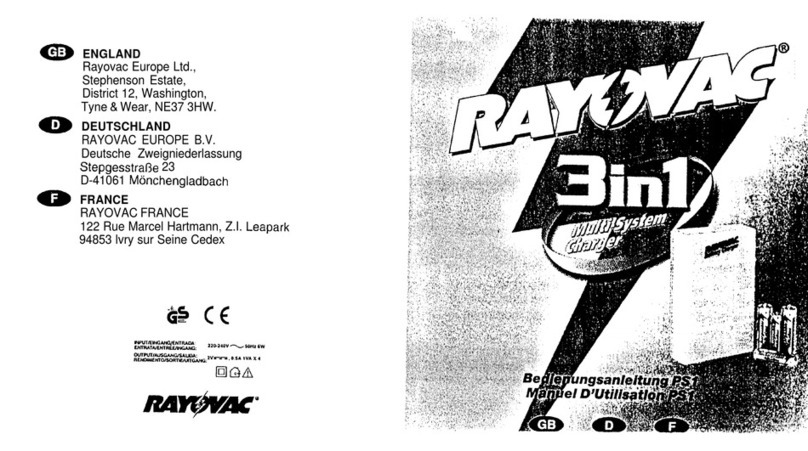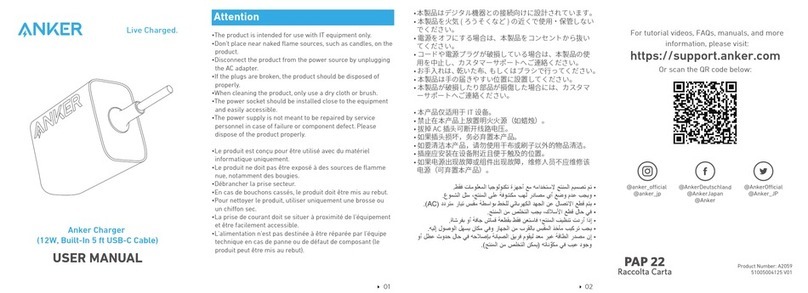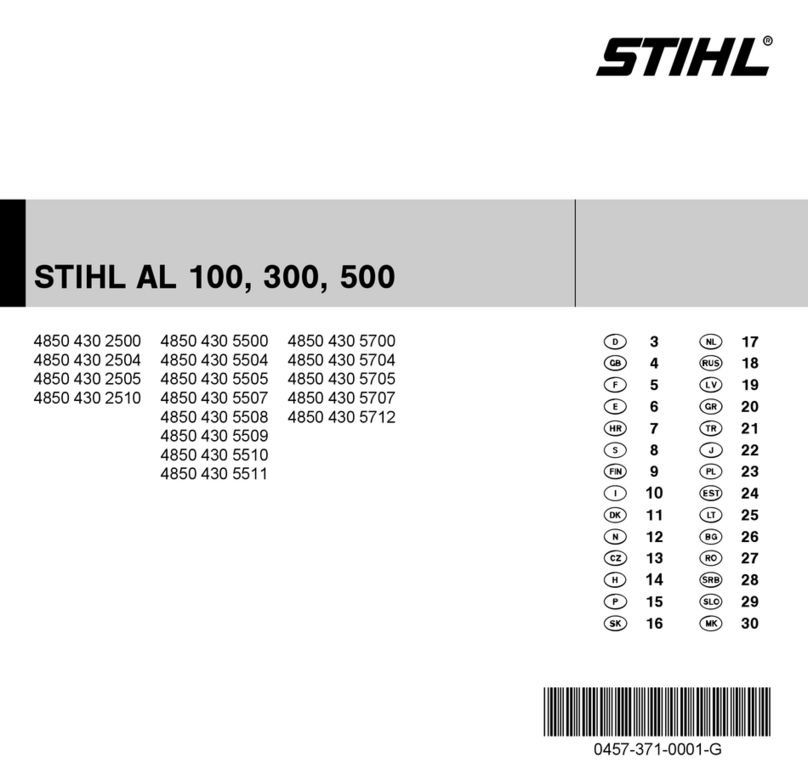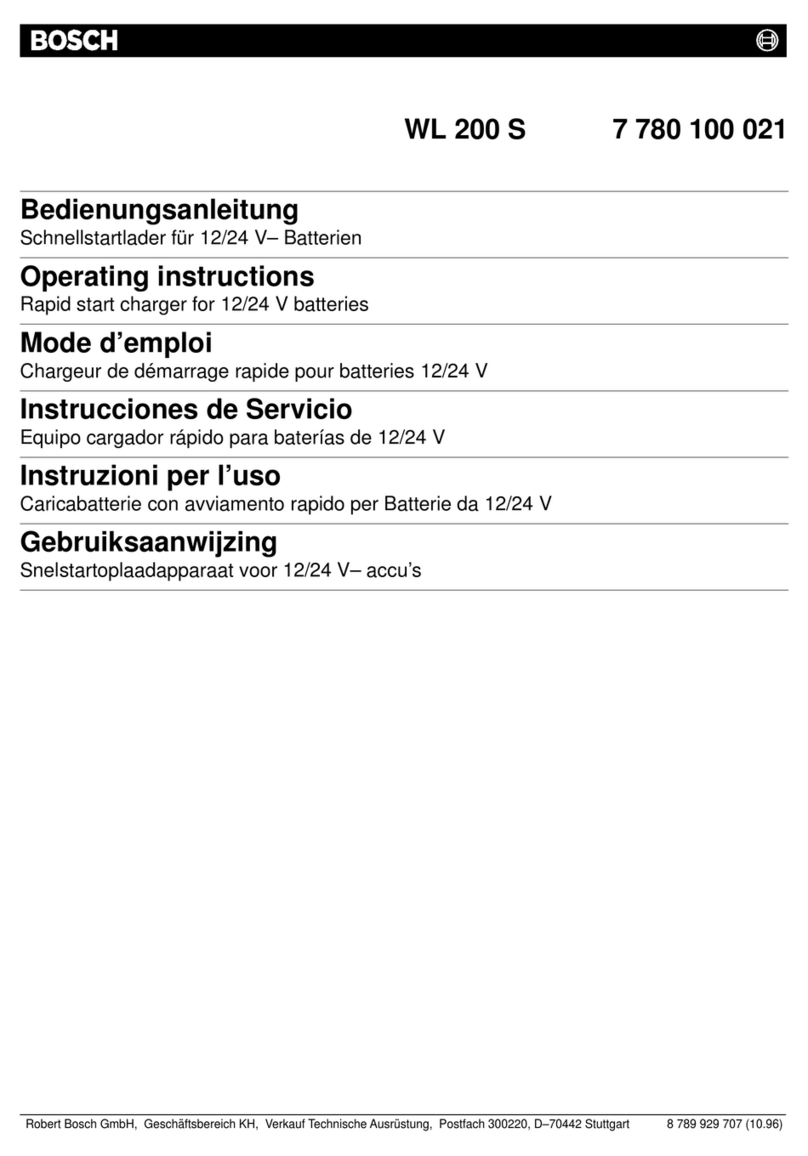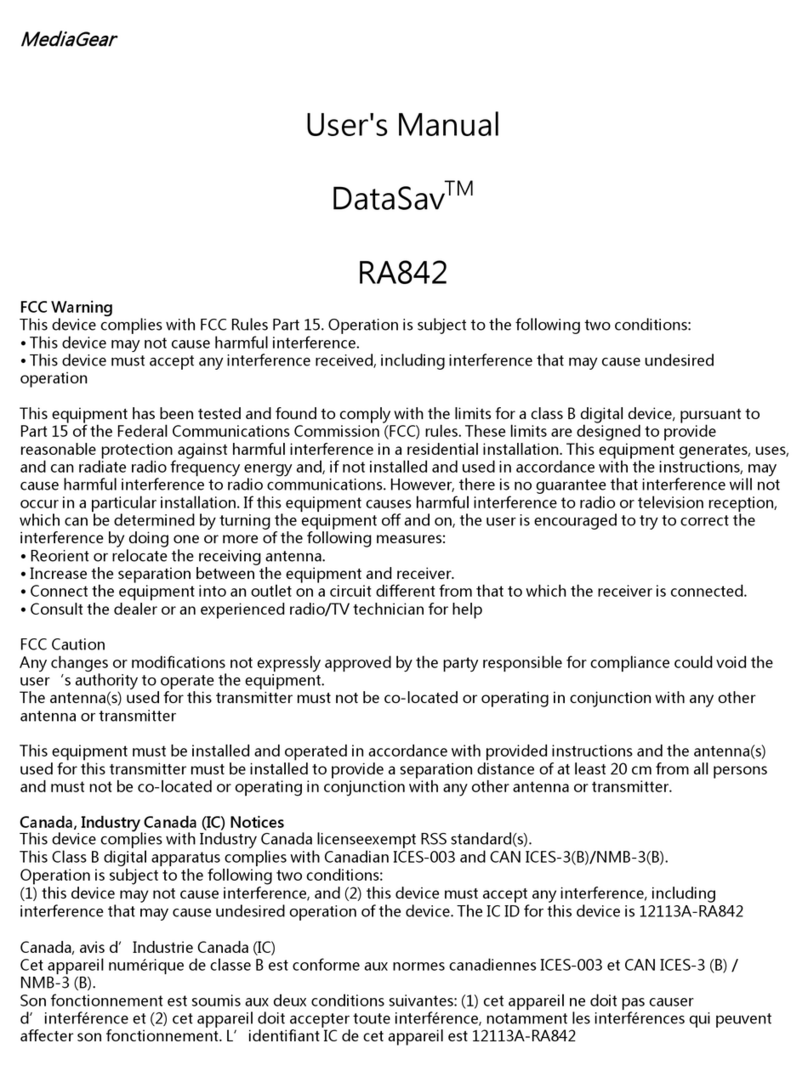
8 GB
Safety
supervision or instruction by a person responsi-
ble for their safety.
JEXPLOSION HAZARD!
Protect yourself from a high-
ly explosive oxyhydrogen gas
reaction! Gaseous hydrogen can leak from
the battery during the charging and discharging
process. Oxyhydrogen gas is an explosive mixture
of gaseous hydrogen and oxygen. The result is
the so-called oxyhydrogen reaction upon con-
tact with open fire (flames, embers or sparks)!
Carry out the charging or discharging proce-
dure in a wellventilated room protected from
the weather. Make sure that there are no sourc-
es of open fire (flames, embers or sparks) in the
vicinity when charging or discharging batteries!
JRISK OF EXPLOSION OR FIRE!
Ensure that the use of the battery
charger cannot ignite any explosive
or combustible substances, e.g. petrol or solvents!
WARNING! EXPLOSIVE GASES!
AVOID FLAMES AND SPARKS! Ensure
that there is adequate ventilation during the
charging process.
JStand the battery on a well ventilated surface
while charging. Otherwise the device could be
damaged.
JDANGER OF EXPLOSION! Ensure that the
positive terminal connection cable does not come
into contact with a fuel line (e.g. petrol line)!
DANGER OF CHEMICAL BURNS! Protect
your eyes and skin against chemical
burns caused by acid (sulphuric acid)
upon contact with the battery! Wear:
Acid-resistant glasses, clothing and gloves! If
your eyes or skin come into contact with sulphuric
acid, rinse the affected part of the body with
plenty of clear running water and seek immedi-
ate medical assistance!
JAvoid causing an electrical short-circuit when
connecting the battery charger to the battery.
Connect the minus pole connecting cable only
to the minus pole of the battery or to the car
body. Connect the plus pole connecting cable
only to the plus pole of the battery!
JBefore connecting to the mains, make sure that
the mains current is equipped with standard
230V~50Hz, PEN conductor, a 16A fuse
and a residual-current circuit-breaker! Other-
wise the device could be damaged.
JDo not place the battery charger near fire, heat,
or subject it to prolonged temperatures of over
50°C! The output from the battery charger
drops automatically in high temperatures.
JAvoid damaging any lines carrying fuel, elec-
tricity, brake fluid, hydraulic oil or water. Be
particularly careful not to cause damage when
mounting the charger in place with screws!
Failure to observe this advice risks loss of life or
injury!
JUse only the supplied original manufacturer’s
parts with the battery charger!
JDo not allow any objects to cover the battery
charger! Otherwise the device could be dam-
aged.
JProtect the electrical contacts of the battery
against short-circuiting!
JUse the battery charger only for charging and
maintenance charging of undamaged 6V/12V
lead batteries (wet cell or gel electrolyte)!
Otherwise damage to property could occur.
JDo not use the battery charger for charging or
maintenance charging of disposable batteries.
Otherwise damage to property could occur.
JDo not use the battery charger for charging or
maintenance charging of damaged or frozen
batteries! Otherwise damage to property
could occur.
JBefore connecting the charging station, read
the information on battery maintenance in the
operating instructions of the battery! Otherwise
personal injury and/or damage to the device
could occur.
JBefore connecting the charging station to a
battery permanently installed in a vehicle, read
the information on electrical safety and mainte-
nance in the operating instuctions of the vehicle!
Otherwise personal injury and/or damage to
the device could occur.
JUnplug the charger from the mains supply when
not being used! This also benefits the environment.
Consider how much electricity is consumed,
even in standby mode.
JRemain alert at all times and always watch what
you are doing. Always proceed with caution
33211_Battery charger_Content_LB4.indd 8 15.06.09 12:41




















